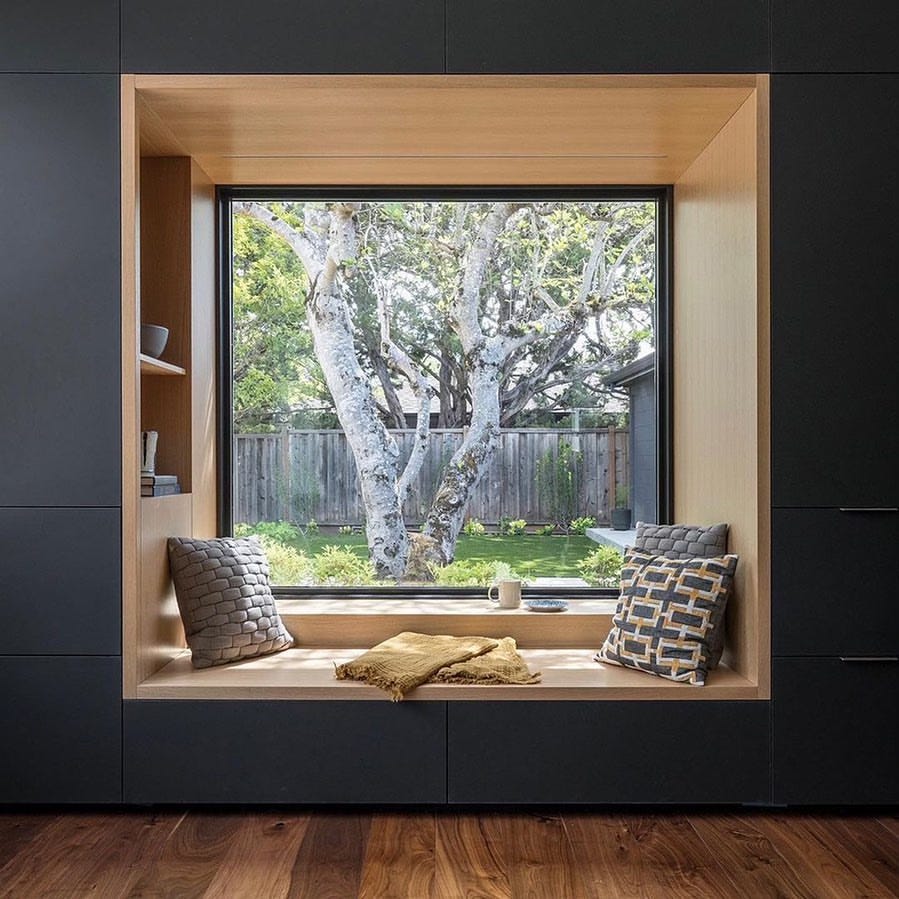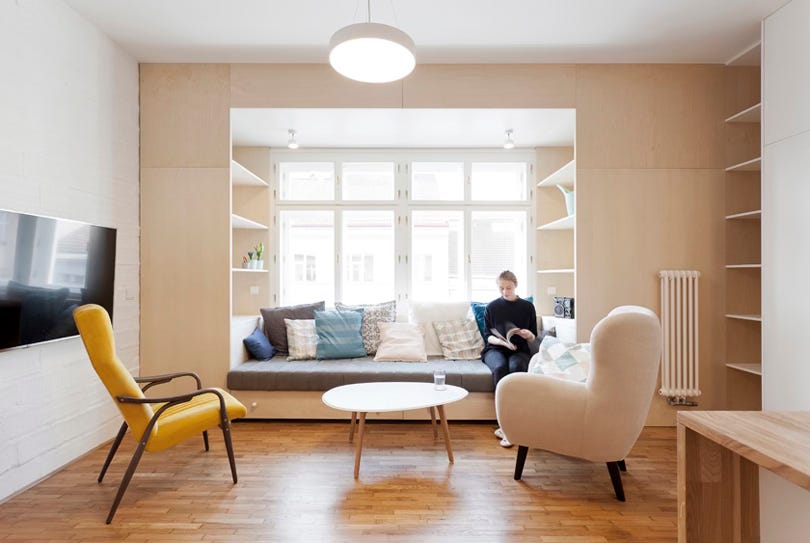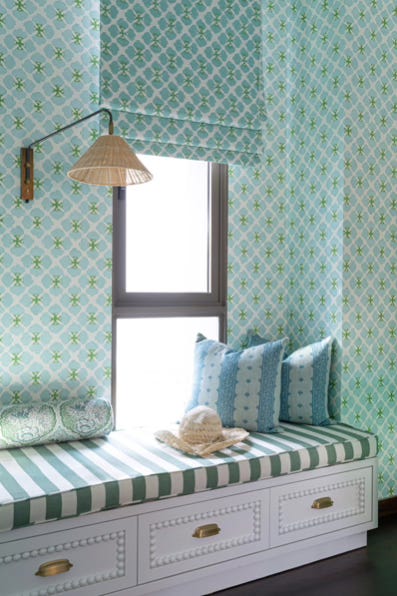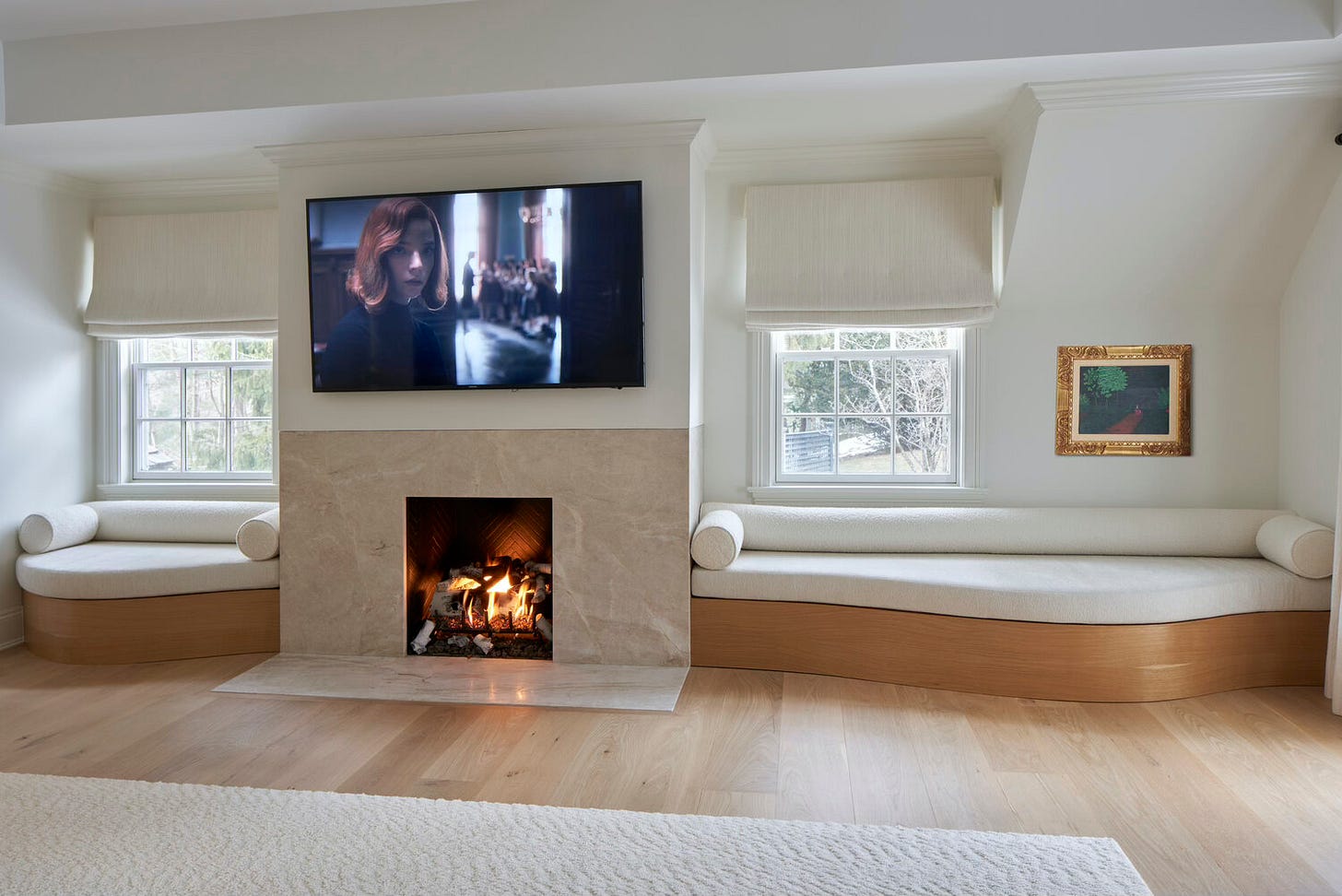Best Seats in the House?
Here's how to make your window seats as comfy as they are chic
Don’t you love the built-in side shelves and ledge in this window seat by Tierney Conner Architecture? I do wonder how comfortable the space is, though, without a bottom cushion. Photo by Adam Potts.
Had Jane Austen been a designer, she might have written “It’s a truth universally acknowledged, that a client in possession of a new-to-them home must be in want of a window seat.” And when clients did request window seats, I always asked if they planned to use them primarily as a decorative feature or if they intended to regularly relax on them. Because all too many window seats look utterly charming but are unpleasant to sit on for extended periods of time.
Like the window seat at the top, this one by Atelier 111 Architekti was created by devoting floor space to create the walls on either side of the sofa-width seat. The shelves on the sides of the niche and the drawers beneath more than compensate for the lost floor space with added storage, though, and the use of pale wood keeps what’s a rather small room from feeling cramped.
A primary reason for the discomfort is that the seat isn’t deep enough. Anything shallower than 45 cm/18 inches will have most adults feeling uncomfortable before they finish reading a half-dozen pages of a book. If you intend to really kick back or stretch out for extended periods, opt for a depth of at least 60 cm/24 inches. That might necessitate having the seat extend out beyond the walls or cabinets on each side.
Here E&A Interiors opted to extend the depth of the window bench beyond that of the niche to ensure it was practical as well as pretty.
Failing to ensure there’s a comfortable space to lean against also prevents a window seat from being used. Be certain to have pillows to use as back and head support against the wall, and make sure window sills or shelving won’t jab you while you sit.
The sconces make this window nook by M+M Interior Design ideal for nestling into at night with a good book, and there’s enough space between the seat and the sill so that one won’t bang one’s leg against it when stretching out horizontally. I also love the fronts of the three drawers. Photo by Heather Talbert.
Finally, don’t skimp on the seat cushion if you intend to really make use of your window bench. A cushion thickness of 5 cm/2 inches is the bare minimum, imo. Don’t forget, chairs and sofas have springs, foam, feathers, and other cushioning beneath the upholstery; your window seat is a basically a board atop a base.
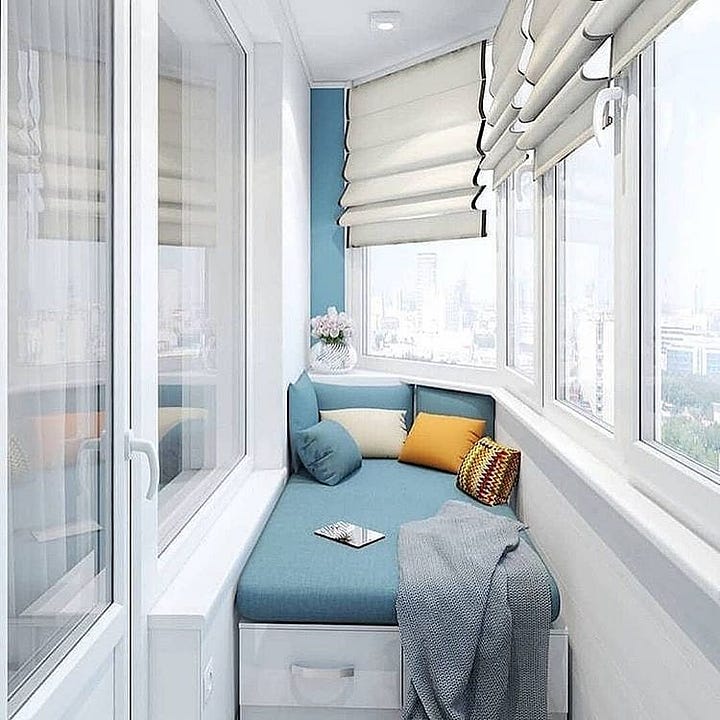
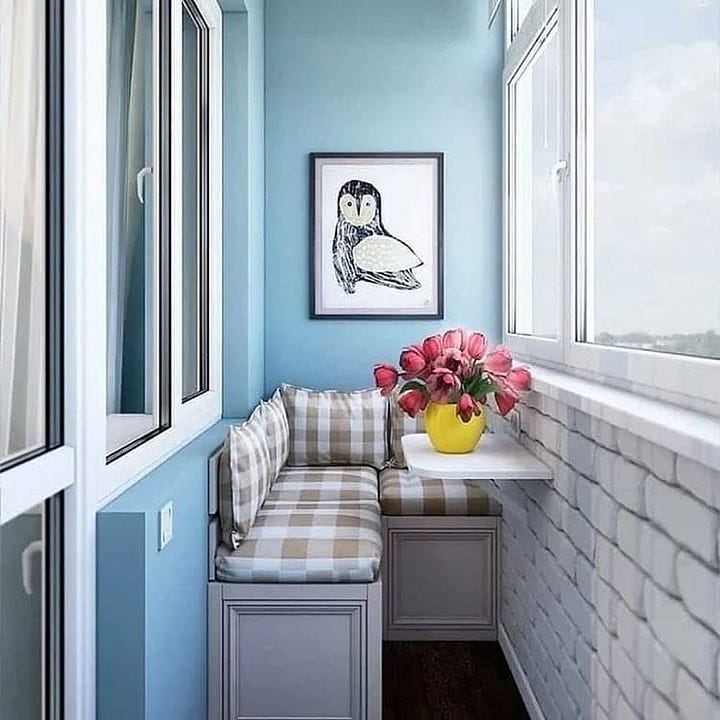
These designs by Sanchi Home & Living let you make the most of a narrow enclosed balcony. I’ve known two people who had tight balconies like this, and they used them as dumping grounds. What a waste of a lovely view! (Well, one had a lovely view; the other overlooked his complex’s dumpster and parking lot.)
Some people simply pile throw cushions on top of their window seat. That can be fine, though you’ll likely be continually straightening and repositioning them. You can try attaching Velcro to the cushions’ underside and to the bench itself to keep them from sliding. Or opt for a one-piece cushion that fits perfectly (my personal preference—it really gives the seat a bespoke elegance).
Window seat as breakfast nook, courtesy of Morgan Farrow Interiors. Photo by Nathan Schroder Photography.
Keep these guidelines in mind, and you’ll have a window seat that can serve as a WFH office, a breakfast nook, a space where you can read bedtime stories to the kids, or a spot for a sneaky nap. Though if it ends up as nothing more than a cute spot where your cat or dog will snooze in the sunshine, that’s fine too, especially if you’re using the base as hidden storage.


